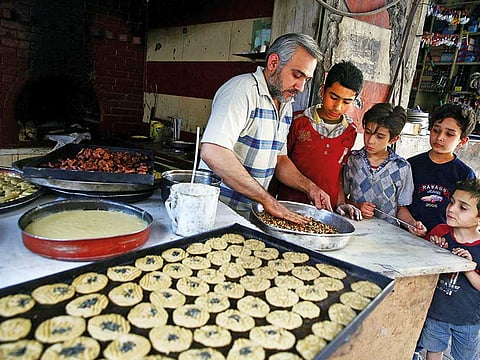Global food bills are in for some sharp rises if supply situation do not ease up
Some food exporters could soon impose limits and add to price spiral

Food prices are soaring.
This has been in the making for some time now. When the pandemic became a reality and the disruption to food supply chains turned into a nightmare, prices did not increase explicitly as everyone expected. At that specific point, there was no clear understanding of how prices will react to the disruption itself, and the fact that food cannot be easily moved from exporters to importers.
This was especially the case given that food producers can stabilise domestic prices as long as there are individuals to sow the fields, reap the crop, and ship it to its desired destination. The same cannot be said for food importers.
For them, the pandemic instituted an ad-hoc approach to food security. Countries that rely mainly on imports for their food supply had to improvise when sources of imports, for certain commodities, became unavailable due to the disruption. As a result, food commodities were shipped from wherever they can be found to importers. In exchange, they sent whatever they had that food exporters needed and could not source globally, such as Personal Protective Equipment (PPE) among other supplies.
A new age barter
This took place because supplies were being priced out of what food exporters were able to pay, or because of unavailability altogether as the scramble for urgently needed supplies started unwinding in 2020. In effect, 2020 was an illustration of what a 21st century global barter trade system would look like.
Last month, the UN's Food and Agriculture Organisation (FAO) reported on its website that “international food commodity prices rose for the 11th consecutive month in April, with sugar leading the increase and cereals resuming their upward trend”. The increase is not exclusive to sugar and cereals only, but can be seen in every single food price index measured by FAO, including meat, diary, and vegetable oil.
Although rising food prices have been partly attributed to disappointing crop yields because of bad weather conditions, the upward trajectory highlights a more significant underlying issue. That is, recovering and growing demand for food commodities, matched with limited supply of the same.
More disruptions?
Even if the weather is to be somewhat blamed for the restriction in food supply, the rest of the blame falls on the disruption caused by the pandemic within the borders of major food producing and exporting countries. That is, with newly mutated variants of COVID-19 infecting a higher number of individuals, and with lagging vaccination rates in those countries, the demand-supply problem for food commodities would, expectedly, get worse.
This is even more problematic in countries with sizable populations. With that, there will be no exponential rise in food prices over the coming months unless a major food producing and exporting country goes completely offline or imposes an export ban. Until then, food prices would increase steadily until the end of 2021.
Imposing bans
What will happen next? Since major food producers can subsidise domestic prices only so much - and less so for those with large populations - they will eventually have to limit their exports to secure additional supplies for domestic consumption. Countries are already mulling the same for strategic food commodities, such as wheat, and have done it for other commodities, like meat.
If export bans turn into a common theme, akin to that in 2008, then food prices will rise sharply. The increase, though, would vary from one food commodity to another depending on how strategic it is and how widely traded it is in international markets. Rice, for instance, is considered a strategic commodity for many countries and is among the least internationally traded food commodities.
Impact of the pandemic on food prices is being finally felt by food producers and food importers. In food importing countries, a recovery in demand has increased the pressure on prices to go up. Part of the increase can be absorbed by food producing countries, subject to how much more they could pay in subsidies and depending on the size of their populations.
All in all, food exporters would eventually resort to bans on exports to secure additional supplies for domestic consumption. This will further inflate prices of commodities, similar to what happened in 2008.
The last thought that I want to leave you with: How important are small food producers, with adequate exporting capacity, in a pandemic-like scenario?
Sign up for the Daily Briefing
Get the latest news and updates straight to your inbox










